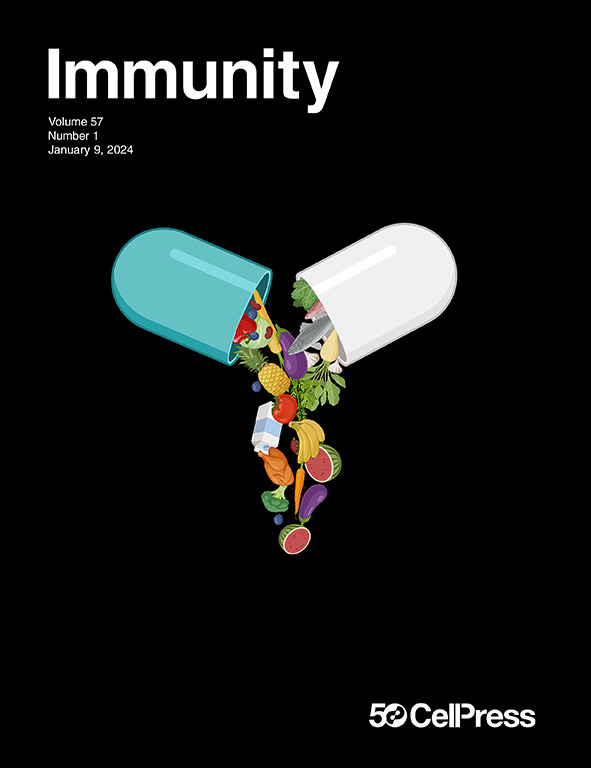Interleukin-34-dependent perivascular macrophages promote vascular function in the brain
IF 25.5
1区 医学
Q1 IMMUNOLOGY
引用次数: 0
Abstract
The development of most macrophages depends on the colony-stimulating factor 1 (CSF-1) receptor, which has two ligands: CSF-1 and interleukin-34 (IL-34). While IL-34 is required for the homeostasis of microglia, the parenchymal macrophages in the central nervous system (CNS), it is unclear whether brain border-associated macrophages (BAMs) also depend on this cytokine. Here, we demonstrated that the embryonic development of murine BAMs in the choroid plexus, leptomeninges, and perivascular spaces required CSF-1, while IL-34 was critical for their maintenance in adulthood. In the brain, Il34 was expressed by mural cells and perivascular fibroblasts, and its transgenic deletion in these cells interrupted BAM maintenance. Il34 deficiency coincided with transcriptional changes in vascular cells, leading to increased flow velocity and vasomotion in pial and penetrating arterioles. Similarly, Mrc1CreCsf1rfl/fl mice lacking CD206+ perivascular BAMs exhibited increased hemodynamics in arterial networks. These findings reveal a crosstalk between vascular cells and CNS macrophages regulating cerebrovascular function.

白细胞介素-34依赖性血管周围巨噬细胞促进脑血管功能
大多数巨噬细胞的发育依赖于集落刺激因子1 (CSF-1)受体,该受体有两种配体:CSF-1和白细胞介素-34 (IL-34)。虽然IL-34是中枢神经系统(CNS)小胶质细胞(实质巨噬细胞)稳态所必需的,但目前尚不清楚脑边界相关巨噬细胞(BAMs)是否也依赖于这种细胞因子。在这里,我们证明了小鼠脉络膜丛、轻脑膜和血管周围间隙的BAMs的胚胎发育需要CSF-1,而IL-34对于它们在成年期的维持至关重要。在大脑中,Il34在壁细胞和血管周围成纤维细胞中表达,这些细胞中Il34的转基因缺失会中断BAM的维持。Il34缺乏与血管细胞的转录变化一致,导致动脉和穿透性小动脉流速增加和血管舒张。同样,缺乏CD206+血管周围BAMs的Mrc1CreCsf1rfl/fl小鼠在动脉网络中表现出增加的血流动力学。这些发现揭示了血管细胞和中枢神经系统巨噬细胞之间的串扰调节脑血管功能。
本文章由计算机程序翻译,如有差异,请以英文原文为准。
求助全文
约1分钟内获得全文
求助全文
来源期刊

Immunity
医学-免疫学
CiteScore
49.40
自引率
2.20%
发文量
205
审稿时长
6 months
期刊介绍:
Immunity is a publication that focuses on publishing significant advancements in research related to immunology. We encourage the submission of studies that offer groundbreaking immunological discoveries, whether at the molecular, cellular, or whole organism level. Topics of interest encompass a wide range, such as cancer, infectious diseases, neuroimmunology, autoimmune diseases, allergies, mucosal immunity, metabolic diseases, and homeostasis.
 求助内容:
求助内容: 应助结果提醒方式:
应助结果提醒方式:


